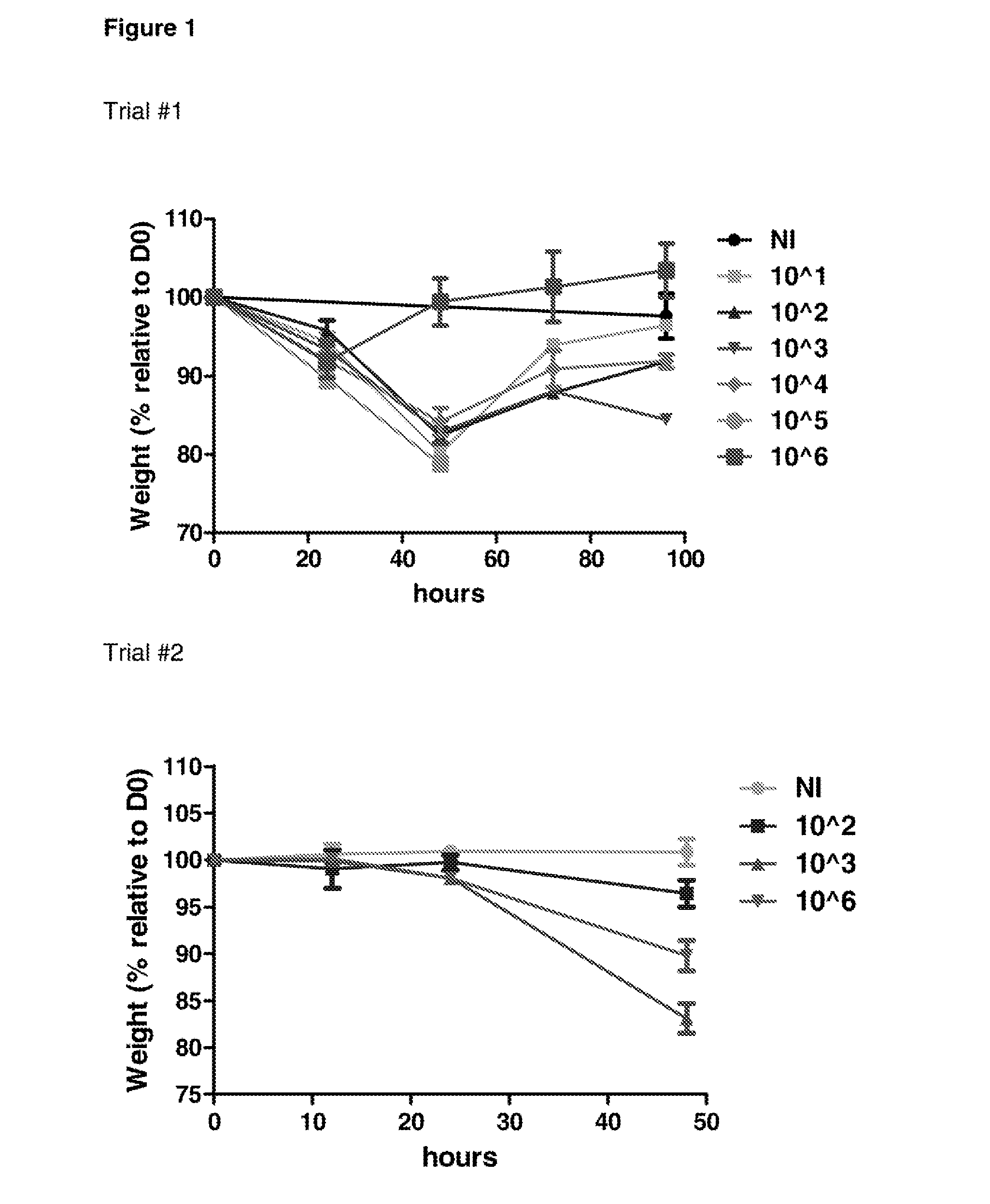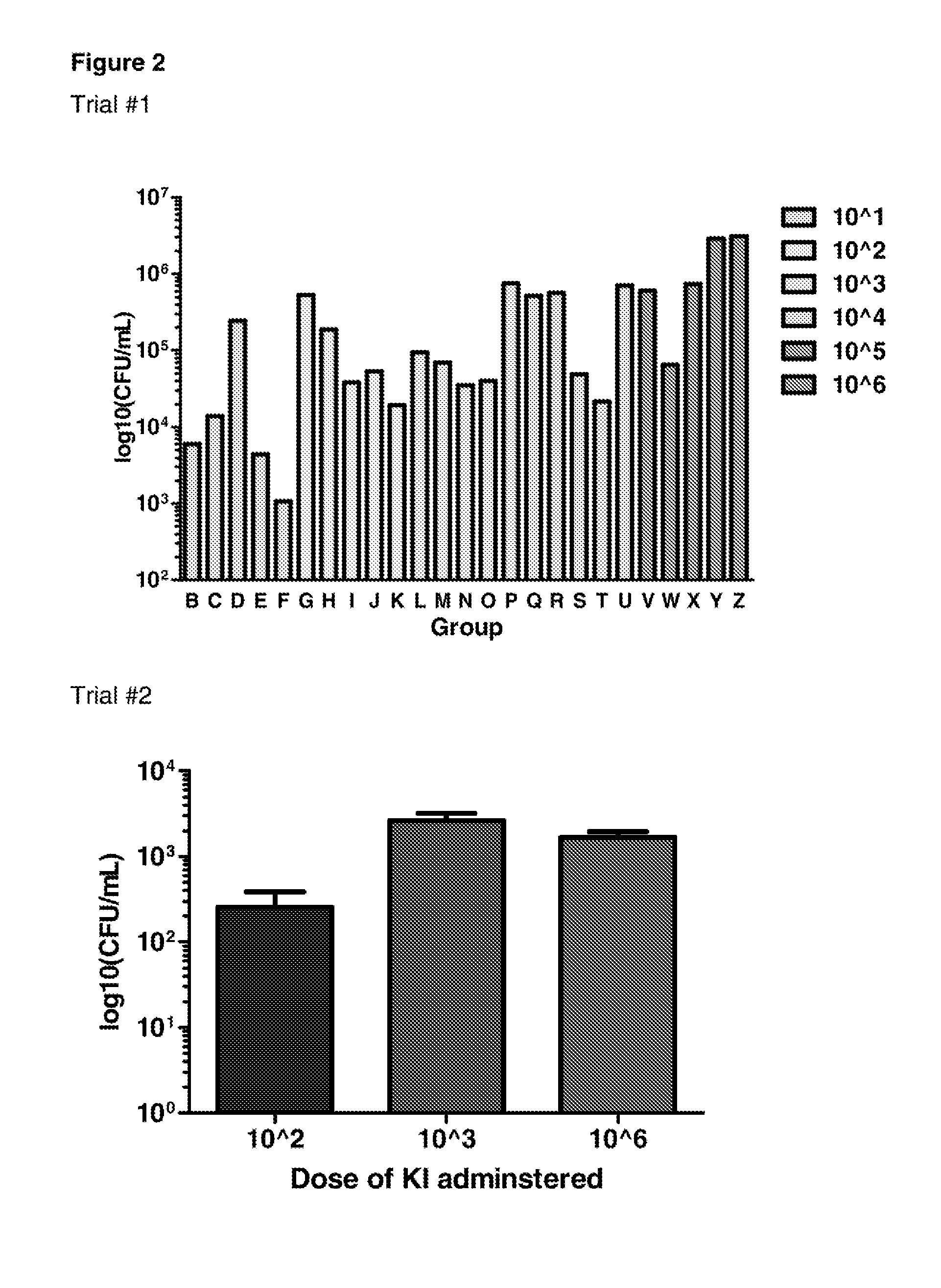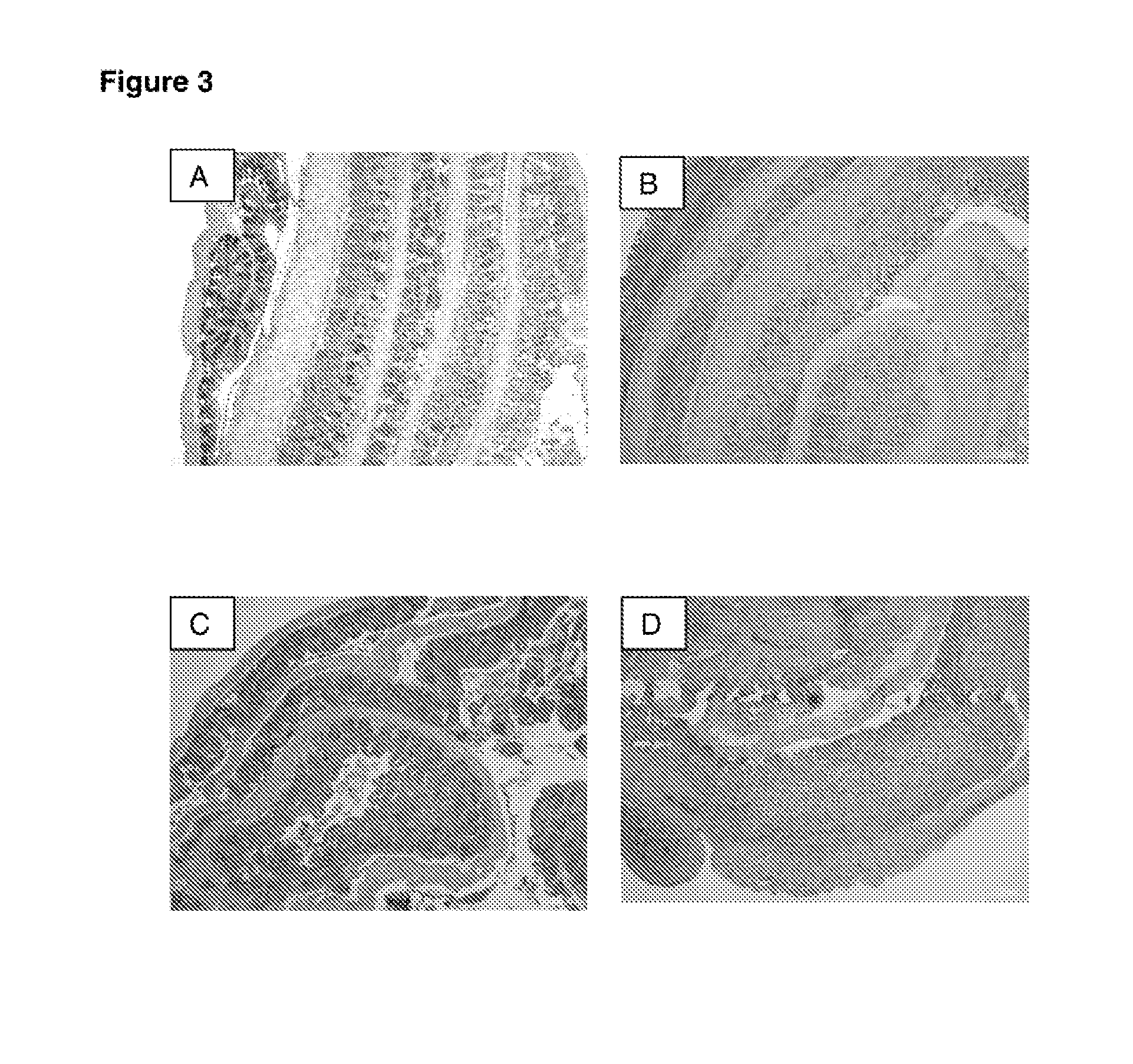Methods and compositions for the treatment and/or prophylaxis of clostridium difficile associated disease
a technology of clostridium difficile and composition, which is applied in the field of compositions for the treatment and/or prophylaxis of clostridium difficile associated disease, can solve the problems of significant morbidity and mortality, affecting the prognosis of clostridium difficile, and putting a considerable economic burden on the healthcare system, so as to achieve the effect of increasing risk and increasing risk
- Summary
- Abstract
- Description
- Claims
- Application Information
AI Technical Summary
Benefits of technology
Problems solved by technology
Method used
Image
Examples
example 1
Determination of Infectious Dose of C. difficile Endospores for In Vivo Experiments
[0235]Two independent mouse trials were performed in order to determine the minimum infectious dose of KI endospores that can be administered to mice that results in measurable C. difficile associated disease.
[0236]For these studies, groups of 3 mice were infected by oral gavage with 101, 102, 103, 104, 105 or 106 endospores generated from the C. difficile KI strain. Mice were monitored for morbidity (as measured by weight loss) and colonisation (as measured by spore shedding), and were humanely sacrificed at different time points (ranging between 12 and 96 hours). C. difficile associated disease in mice was also examined using histopathology.
[0237]FIG. 1 shows infection of C57 / BL6 mice with 103 KI endospores resulted in measurable C. difficile associated disease (weight loss)
[0238]FIG. 2 shows infection of C57 / BL6 mice with 103 KI endospores resulted in measurable colonisation with C. difficile (as d...
example 2
Production of Antibodies that Bind to a C. difficile Antigen
Preparation of Antigen
[0241]The procedures for preparing microbe or microbial product-containing antigen reported in Pub. No. WO / 2004 / 078209 International Application No. PCT / AU2004 / 000277 (the contents of which are herein incorporated by reference), were used with modification.
[0242]In brief, bacterial antigens for the production of the vaccines were prepared from C. difficile. The following antigens were produced:
1. C. difficile Toxin B
2. C. difficile vegetative cells
3. C. difficile endospores
4. C. difficile S-layer preparations
[0243]Vaccines were made by emulsifying an equal volume of each antigen with the same volume of Montanide ISA206VG adjuvant.
1. Toxin B
[0244]Recombinant C. difficile Toxin B from strain 630 was used as an antigen. In brief, 2×500 ml volumes of Terrific broth K+ phosphate+50 mg / ml kanamycin in 2 L flask inoculated with 5 ml each of E. coli BL21 cells expressing toxB (clone CSB1 (CSB4P×2B1) (toxB(NIX)...
example 3
Detection of Antibodies that Bind to C. difficile Toxin B by ELISA
[0251]Recombinant C. difficile Toxin B from strain 630 was used in an antigen vaccine, cows immunised and hyperimmune colostrum purified as described in Example 2.
[0252]Plates were coated with purified recombinant Toxin B from strain 630 [1 ug / ml] in carbonate buffer [pH 9.6], 100 μl / well, overnight, 4° C. Toxin B was prepared in 10% glycerol, at 1.94 mg / ml. Plates were washed 6 times in PBS-0.05% Tween buffer, comprising 137 mM NaCl, 1.5 mM KH2PO, 8 mM Na2HPO4, pH 7.4. 100 μl of each test colostrum prepared from cows as described in Example 2 were diluted in PBS-Tween containing 12 mg / ml casein, were added to each well and incubated at 37° C. for 1 h. Plates were washed 6 times in PBS-Tween buffer, after which 100 μl goat anti-bovine IgG-peroxidase conjugate (Southern Biotechnology Associates, Inc., Birmingham, Ala., USA), diluted 1:10000 in PBS-Tween-casein, were added to each well. Plates were incubated for 1 h at ...
PUM
| Property | Measurement | Unit |
|---|---|---|
| Time | aaaaa | aaaaa |
| Time | aaaaa | aaaaa |
| Time | aaaaa | aaaaa |
Abstract
Description
Claims
Application Information
 Login to View More
Login to View More - R&D
- Intellectual Property
- Life Sciences
- Materials
- Tech Scout
- Unparalleled Data Quality
- Higher Quality Content
- 60% Fewer Hallucinations
Browse by: Latest US Patents, China's latest patents, Technical Efficacy Thesaurus, Application Domain, Technology Topic, Popular Technical Reports.
© 2025 PatSnap. All rights reserved.Legal|Privacy policy|Modern Slavery Act Transparency Statement|Sitemap|About US| Contact US: help@patsnap.com



